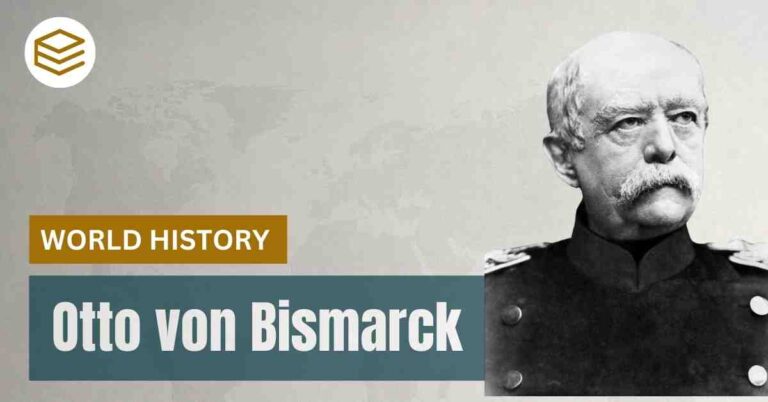October 25, 2025 12:35 am
The American Revolution was a watershed moment in global history. It marked the first successful rebellion of a colony against a major imperial power, laying the groundwork for the modern principles of democracy and individual liberty. The road to revolution was long and complex, shaped by a range of geographic, economic, political, and ideological factors. These issues not only spurred discontent among the colonies but also galvanized them into action against the British Crown.
I. America’s Independent Way of Thinking
1. Geographic Considerations
The geographic realities of the 13 colonies profoundly influenced their political, economic, and social development, ultimately fostering a spirit of independence:
- Distance from Britain:
- The vast expanse of the Atlantic Ocean, stretching approximately 3,000 miles, served as a formidable natural barrier. Decisions made by the British government often took months to reach the colonies, and responses were delayed further.
- The inefficiency of this communication created significant gaps in governance, leaving the colonies to manage local affairs autonomously. This autonomy eventually became an expectation, making British attempts to reassert control seem intrusive and unacceptable.
- Frontier Spirit:
- Many colonists settled in the American wilderness, where survival demanded resilience, ingenuity, and cooperation. This experience cultivated a culture of self-reliance and independence.
- The rugged lifestyle also fostered resistance to centralized control, as frontier communities valued their hard-won freedom over distant authority.
- As colonies expanded westward, they frequently clashed with British policies like the Proclamation of 1763, which restricted settlement beyond the Appalachian Mountains.
2. Colonial Legislatures and Self-Governance
Colonial assemblies were a crucial incubator for the revolutionary ideals and leadership that later shaped the movement for independence.
- Establishment of Local Legislatures:
- Each colony developed its own legislative body, such as the Virginia House of Burgesses (established in 1619). These bodies functioned as mini-parliaments, passing local laws, imposing taxes, and managing militias.
- By the 18th century, colonists saw these assemblies not as privileges granted by the Crown but as inherent rights.
- Conflict with Royal Governors:
- Governors, who were appointed by the King, often clashed with the assemblies over funding and policy. Assemblies could withhold salaries and budgets, effectively limiting the governors’ power.
- This tension highlighted the growing divide between colonial expectations of self-rule and the Crown’s efforts to enforce imperial authority.
- Breeding Ground for Revolutionaries:
- Influential leaders such as George Washington, Patrick Henry, and Thomas Jefferson began their political careers in these legislatures, defending colonial rights against perceived overreach by British officials.
3. Salutary Neglect
The policy of salutary neglect allowed the colonies to operate with minimal interference from Britain, fostering economic and political independence:
- Policy of Lax Enforcement:
- Under Prime Minister Robert Walpole, Britain loosely enforced trade regulations, enabling the colonies to develop their own economies and governance structures.
- This freedom led to thriving trade networks and the establishment of local systems of justice, taxation, and lawmaking.
- Reversal After 1763:
- Following the Seven Years’ War, Britain abandoned salutary neglect to enforce stricter trade laws and taxation, hoping to recoup war debts.
- The abrupt change alienated colonists who had grown accustomed to self-determination.
II. Economic Grievances
Economic exploitation under the British mercantilist system was a central grievance that united the colonies in opposition to the Crown.
1. Mercantilism and Trade Restrictions
- The Mercantilist System:
- Mercantilism dictated that colonies existed to enrich the mother country. Colonists were expected to supply raw materials like tobacco, cotton, and sugar, while importing finished goods from Britain.
- This system ensured a favorable balance of trade for Britain at the expense of colonial economic autonomy.
- Restrictive Acts:
- Navigation Acts (1651–1673): Mandated that colonial goods be transported on British ships, increasing costs and limiting trade options.
- Wool Act (1699): Prohibited the export of American-made woolen goods, stifling the colonial textile industry.
- Iron Act (1750): Prevented the production of finished iron goods, forcing colonies to export raw iron to Britain.
- Colonial Resentment:
- These laws were seen as economic shackles, designed to benefit Britain while limiting colonial prosperity and industrial growth.
2. Triangular Trade
- Economic Benefits for Britain:
- The Triangular Trade involved the exchange of raw materials from the colonies, manufactured goods from Britain, and enslaved people from Africa.
- This system enriched British merchants but left the colonies economically dependent.
- Colonial Resentment:
- The reliance on British imports and restrictions on exports stifled economic growth, fueling anger and demands for reform.
3. Taxes and Tariffs
Britain’s attempts to impose direct taxes on the colonies became a flashpoint for revolutionary sentiment:
- Sugar Act (1764):
- Imposed taxes on sugar and molasses, targeting colonial merchants.
- The act was viewed as an intrusion into local economic affairs, sparking widespread protests.
- Stamp Act (1765):
- Required official stamps on legal documents, newspapers, and playing cards.
- Resistance to the act was widespread, leading to boycotts, protests, and the formation of groups like the Sons of Liberty.
- Townshend Acts (1767):
- Levied duties on imports such as glass, paper, paint, and tea.
- Strengthened the unity of colonial opposition through coordinated boycotts and protests.
- Tea Act (1773):
- Granted the British East India Company a monopoly on tea sales, undercutting colonial merchants.
- The act directly led to the Boston Tea Party, a pivotal act of defiance.
III. Ideological Influences
The ideological underpinnings of the American Revolution were deeply rooted in Enlightenment philosophy, religious diversity, and the rejection of traditional forms of governance such as monarchy. These ideas inspired revolutionary leaders and shaped the foundational documents of the new nation.
1. The Enlightenment
The Enlightenment, an 18th-century intellectual movement, emphasized reason, liberty, and individual rights. Its principles significantly influenced the ideological framework of the Revolution.
- Philosophical Foundations:
- John Locke: Advocated for natural rights—life, liberty, and property—and the idea that governments exist by the consent of the governed. Locke’s assertion that people had a right to overthrow oppressive governments directly influenced revolutionary rhetoric.
- Montesquieu: Proposed the separation of powers, ensuring no single branch of government could dominate the others. This idea would later be central to the U.S. Constitution.
- Jean-Jacques Rousseau: Argued for the social contract, where citizens agree to be governed in exchange for the protection of their rights.
- Adam Smith: Criticized mercantilism in The Wealth of Nations (1776), advocating for free trade and economic self-determination, ideas embraced by colonial merchants.
- Impact on Revolutionary Leaders:
- The writings of these thinkers were widely read by figures like Thomas Jefferson, Benjamin Franklin, and John Adams, who used Enlightenment ideas to justify rebellion and articulate visions of a new, democratic society.
2. Republicanism
- Core Principles:
- Republicanism emphasized civic virtue, the rejection of hereditary rule, and the belief that sovereignty resides with the people.
- Revolutionary leaders argued that the British monarchy had become corrupt and tyrannical, making it unfit to govern the colonies.
- Rejection of Monarchy:
- The colonists’ embrace of republican values led to the widespread rejection of monarchy as a legitimate form of government.
- These ideals were expressed in Thomas Paine’s Common Sense, which called for the establishment of independent republics free from British control.
3. Religious Freedom
The diversity of religious traditions in the colonies fostered a culture of tolerance and individualism, which translated into political demands for liberty.
- Diverse Religious Traditions:
- The colonies were home to Puritans, Quakers, Catholics, and other religious groups, many of whom had fled persecution in Europe.
- This diversity encouraged the development of laws that protected religious freedom and limited government interference in personal beliefs.
- Influence on the Revolution:
- Religious dissenters played a key role in advocating for independence, often framing the struggle as a moral duty to resist tyranny.
IV. Escalating Tensions (1763–1775)
The period following the Seven Years’ War saw a dramatic escalation of tensions between Britain and the American colonies, driven by new policies, colonial resistance, and increasing violence.
1. Post-Seven Years’ War Policies
- Proclamation of 1763:
- This decree prohibited colonial settlement west of the Appalachian Mountains, aiming to prevent conflicts with Native Americans.
- Land-hungry colonists saw this as a betrayal, particularly those who had already invested in western lands.
- Quartering Act (1765):
- Required colonists to house and feed British soldiers, a practice viewed as an infringement on personal freedoms.
- This act became a rallying point for opposition, with colonists decrying the presence of a standing army in peacetime.
2. Organized Resistance
- Committees of Correspondence (1772):
- These committees, first formed in Massachusetts, were designed to coordinate resistance across the colonies.
- They facilitated communication, organized boycotts, and shared intelligence about British actions.
- First Continental Congress (1774):
- Delegates from 12 colonies convened in Philadelphia to address grievances and plan collective action.
- The Congress adopted the Articles of Association, which called for a boycott of British goods and established local enforcement committees.
- Second Continental Congress (1775):
- This body managed the war effort, appointed George Washington as commander-in-chief of the Continental Army, and ultimately adopted the Declaration of Independence.
V. Beginning of the Revolution
The first military engagements of the war marked the transition from political resistance to armed conflict.
1. Early Battles
- Lexington and Concord (April 19, 1775):
- British troops attempted to seize colonial weapons stored in Concord, but were met by local militias at Lexington.
- These skirmishes resulted in the first casualties of the war and solidified colonial resolve.
- Battle of Bunker Hill (June 17, 1775):
- Though technically a British victory, the heavy losses they suffered demonstrated the strength and determination of the colonial forces.
2. Thomas Paine’s Common Sense
- Content and Impact:
- Published in January 1776, Common Sense argued that independence was the logical solution to colonial grievances.
- Paine rejected monarchy and hereditary rule, calling for a republic based on democratic principles.
- The pamphlet sold over 500,000 copies, galvanizing public support for independence and influencing key leaders.
3. Declaration of Independence (July 4, 1776)
- Drafting and Adoption:
- Written by Thomas Jefferson, the Declaration enumerated grievances against King George III and asserted the colonies’ right to self-governance.
- It famously proclaimed that “all men are created equal” and endowed with “unalienable Rights” such as “Life, Liberty, and the pursuit of Happiness.”
- Significance:
- The Declaration marked a formal break with Britain, uniting the colonies under a common cause.
- Its principles would later inspire democratic movements worldwide.
VI. The Revolutionary War (1775–1783)
1. Foreign Alliances
- France’s Support (1778):
- The Battle of Saratoga (1777) convinced France to ally with the colonies, providing crucial military and financial aid.
- French troops and naval forces played a decisive role in the war’s later stages.
- Spain and Holland:
- Spain and Holland joined the war as Britain’s enemies, stretching British resources and opening new fronts.
2. Final Victory
- Yorktown (1781):
- British General Cornwallis surrendered to Washington and French forces at Yorktown, effectively ending major combat.
- Treaty of Paris (1783):
- The treaty recognized American independence and ceded territory from the Atlantic Ocean to the Mississippi River.
Conclusion
The American Revolution was the result of decades of escalating tensions, driven by economic exploitation, political marginalization, and the transformative power of Enlightenment ideas. What began as a series of protests against British policies grew into a full-fledged war for independence, culminating in the birth of the United States. The Revolution’s legacy endures as a beacon of liberty, inspiring democratic movements across the globe.





[…] History Topics History Optional 2025 : Download Notes, Mapping, PDF, Foundation Course Indian Feudalism (300-1200 CE) Chola Empire (9th -13th century AD): Administration, Local Govt., Village Economy, Society The American Revolution : Factors leading to revolution […]